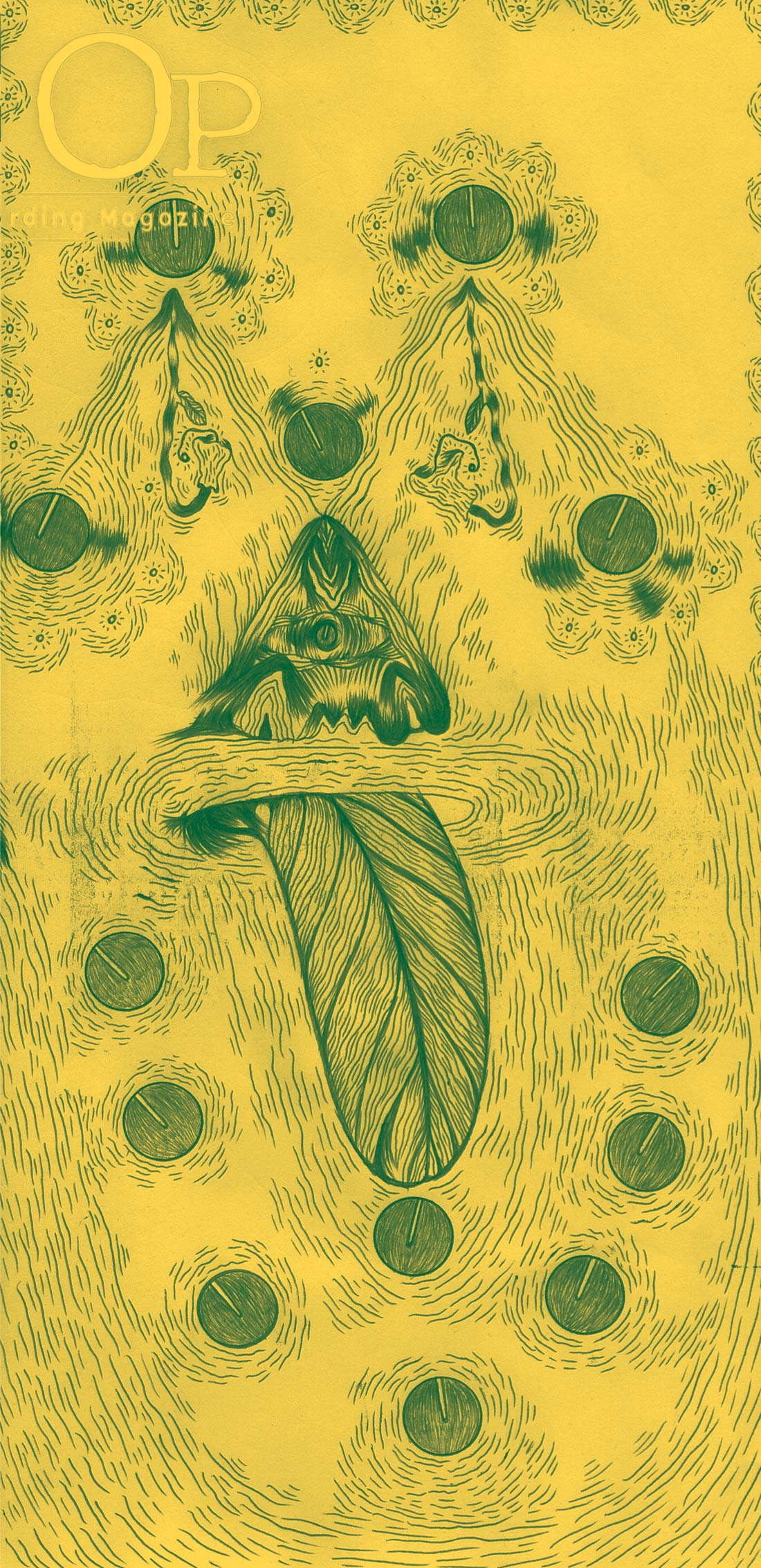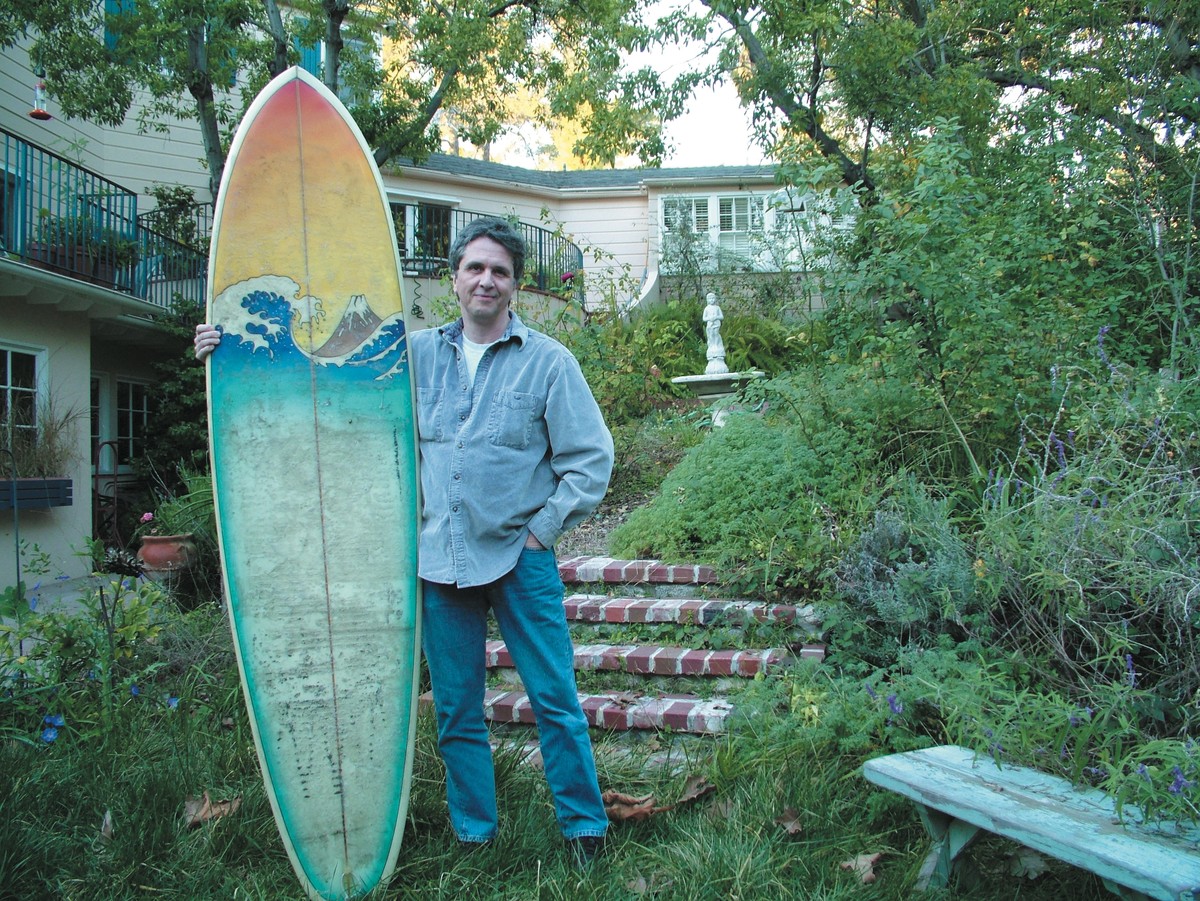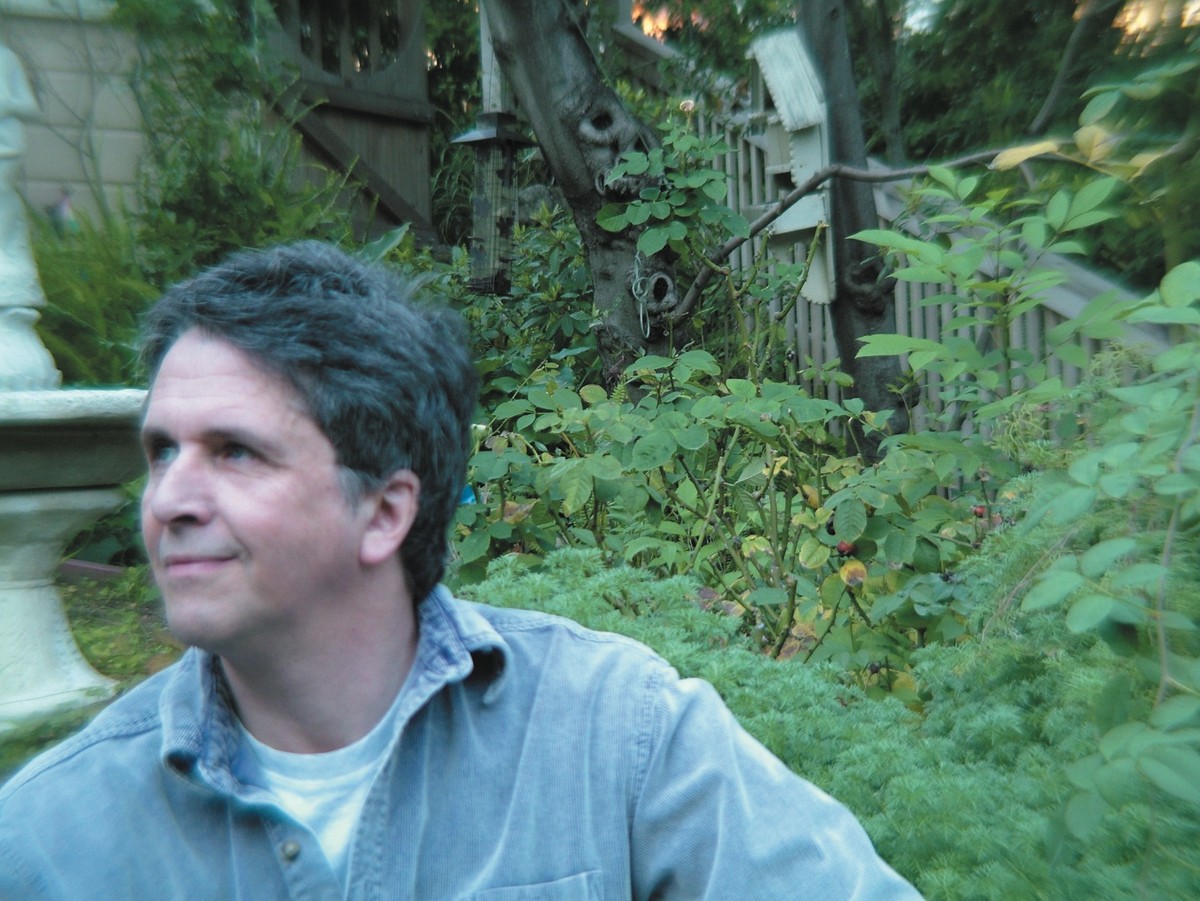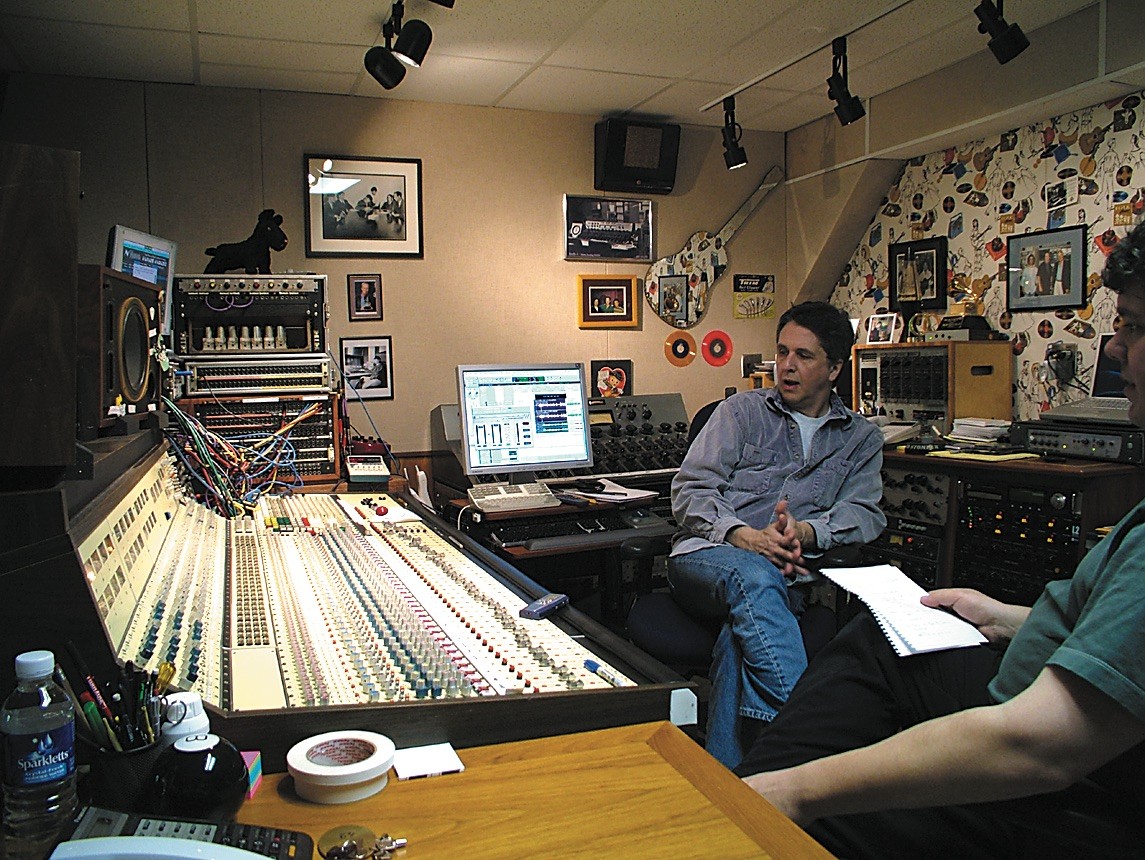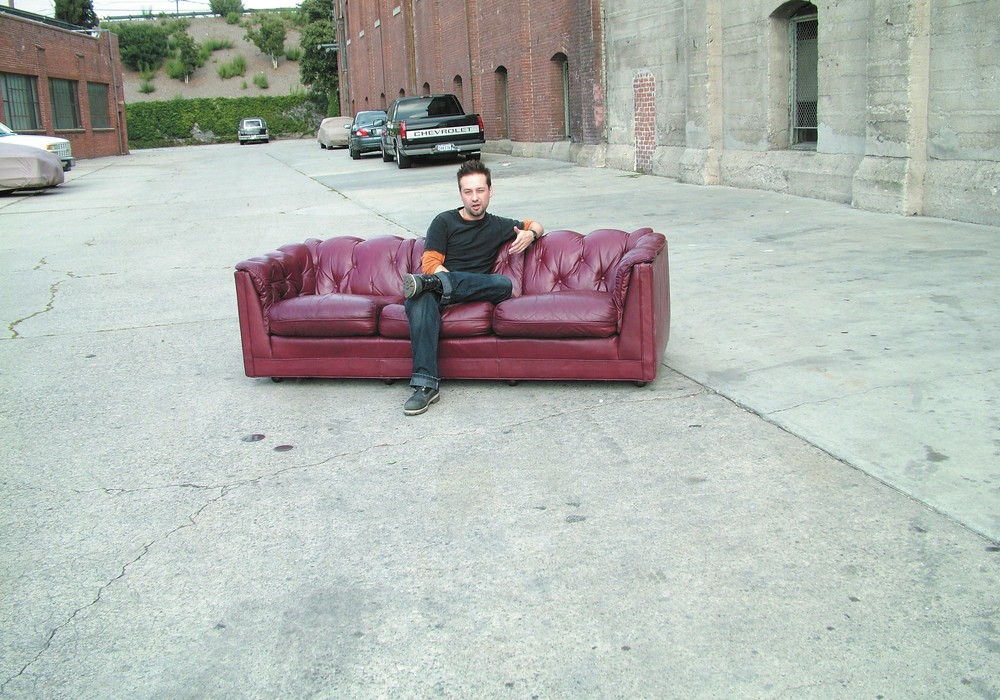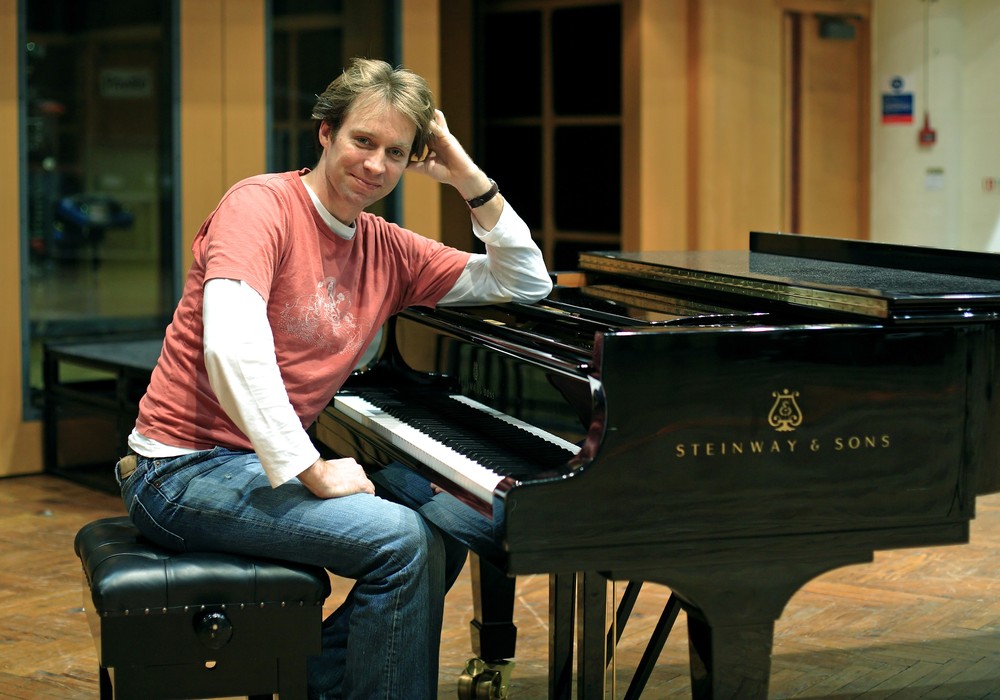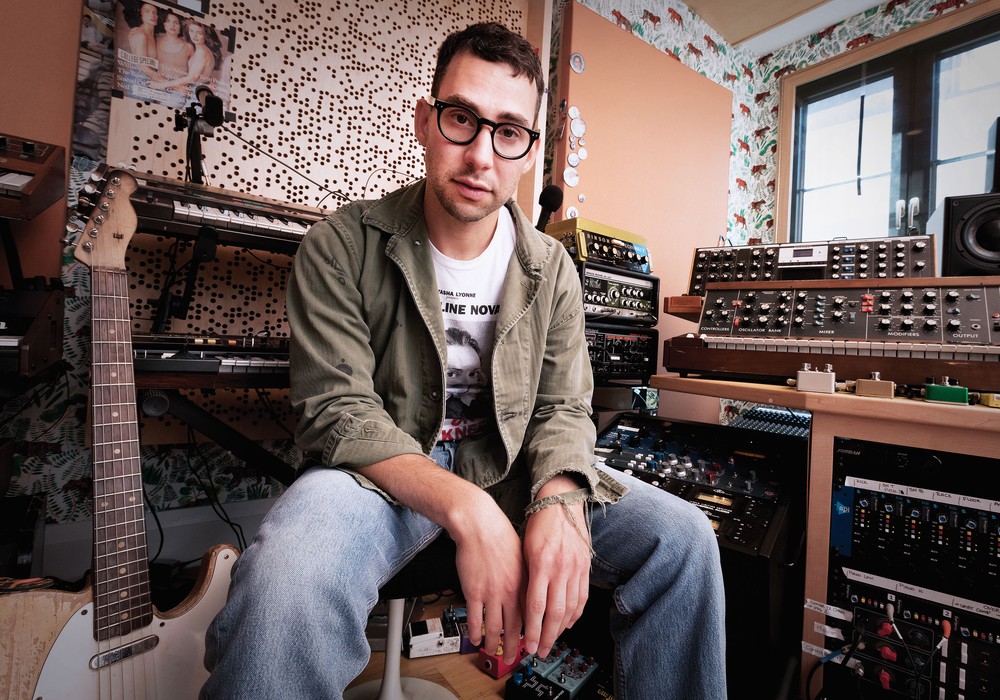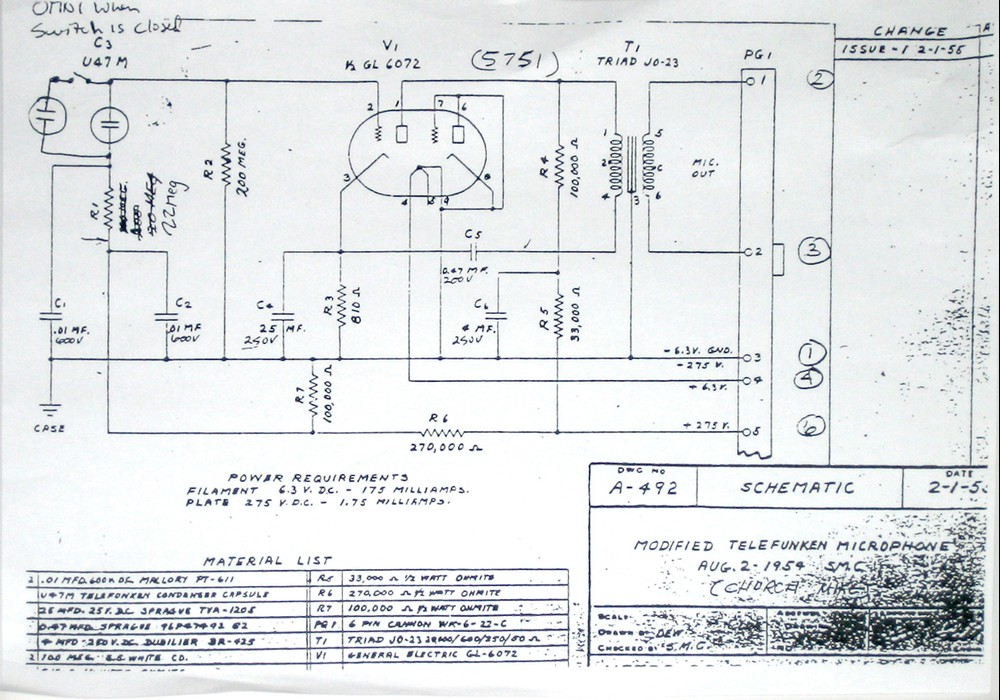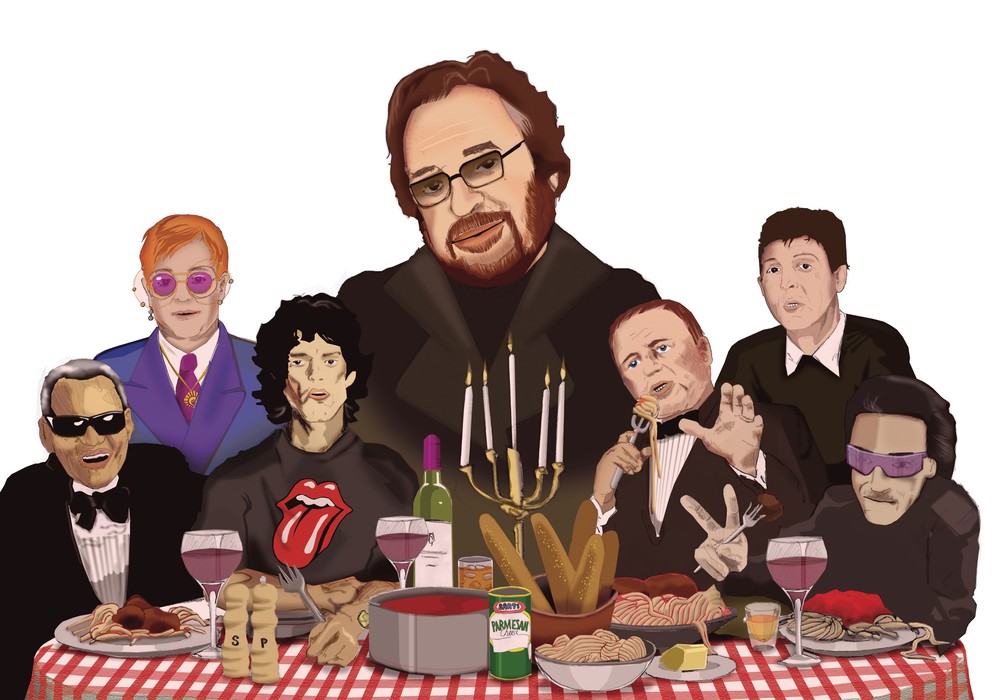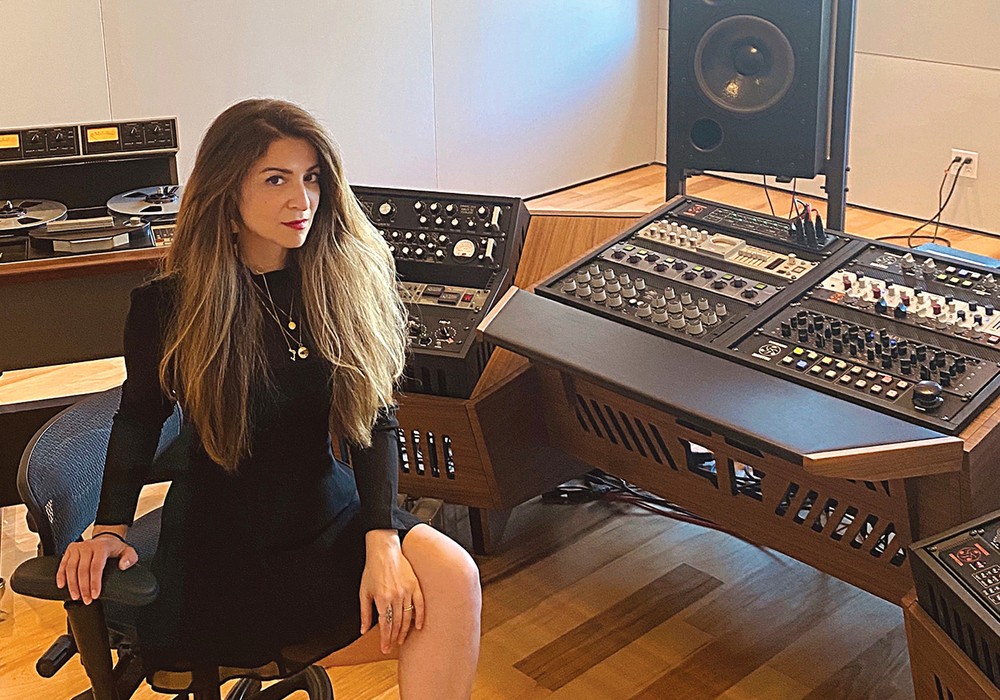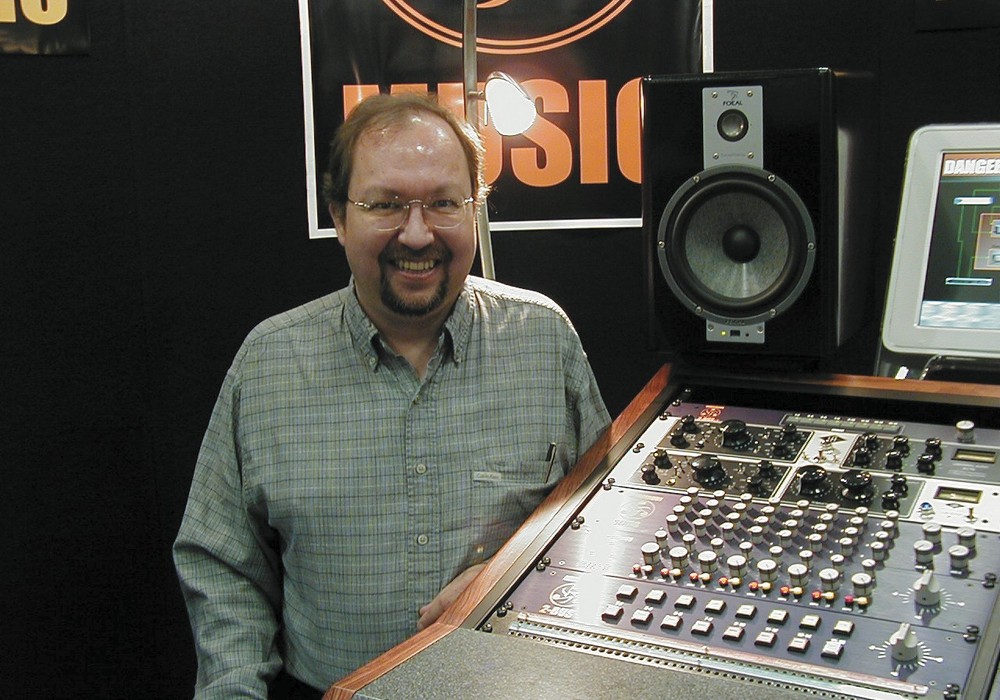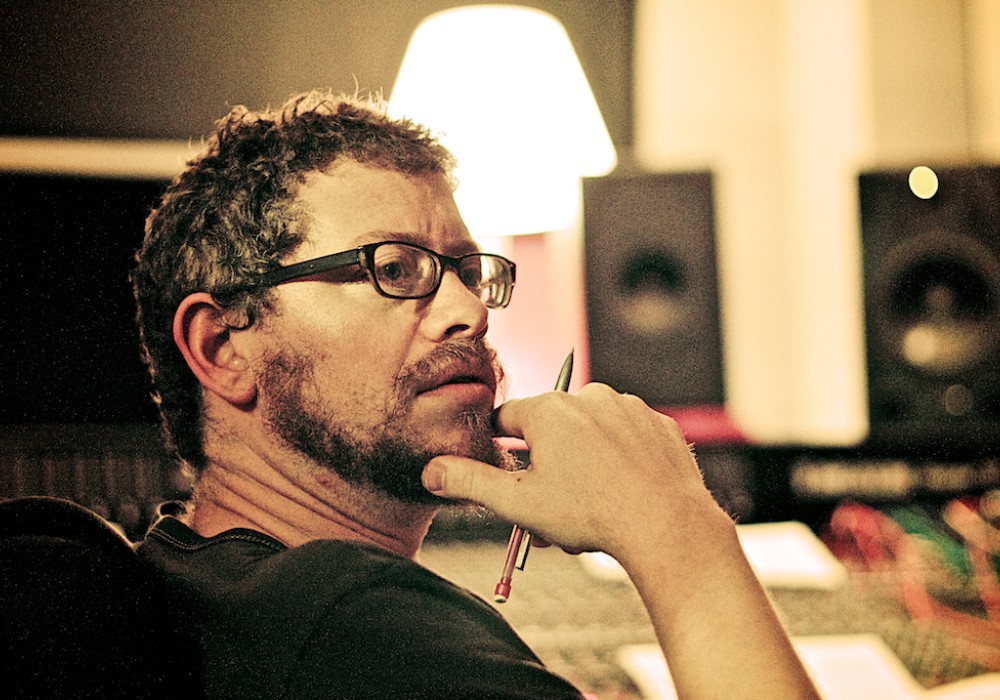Grammy award winner Mark Linett is the veteran of many years in the studio, starting in Hollywood at Artist Recording, Paramount and Mystic Studios in the early seventies after running his own PA company. Later he was hired by George Massenburg [Tape Op #54] to assist at Sunset Sound for several years before heading over to Amigo, Warner Brothers' now defunct studio, where he did sessions with Randy Newman, Rickie Lee Jones, Los Lobos and Michael McDonald. In the late eighties he ended up doing most of the engineering for Brian Wilson's first self- titled solo album, which led to work compiling The Beach Boys' back catalog for reissues, the Good Vibrations box set and Pet Sounds projects, including the box set, stereo and surround mixes and live concert recordings. Last year Mark engineered and mixed the release of Brian's long-stalled SMiLE album, his long-awaited follow-up to Pet Sounds. Mark has also done recent albums with Dave Alvin (they won a Grammy in 2001!), The Blasters, Los Straitjackets, Christy McWilson, Big Sandy & his Fly-Rite Boys and John Lithgow (Singin' in the Bathtub!). We dropped in at Mark's home studio, Your Place or Mine (also the name of his live recording service), nestled in under his Glendale home next to the swimming pool. It's a modestly sized place but the equipment in it would have a vintage gear collector salivating. When we walked in Mark was finishing up some mixes for a DVD release of a SMiLE performance.
You really do quite a variety of different recording jobs. You're known for archiving and retrospective stuff, like the Good Vibrations box set. Also for tracking records from start to finish, producing or co-producing in those cases, and mixing, mastering and remote recording. Is there any one part that takes more of your interest that you'd rather be doing more of, or do you like having a mix of these different jobs?
Well, I like the mix. I like doing live records a lot. One of the things I like the most that I get to do the least is big, orchestral things. I did a big band for a TV show a month ago and I love that stuff. That stuff is pretty unique to the recording studio. I did a 65-piece orchestra for John Lithgow a few years ago. That's just great. It's not really hard either because it's so much about the playing and the room and much less about all this technology. Once we got to 8-track and used separate tracks for the instruments, overdubbing instruments and then from all of that trying to assemble something that sounds like a performance again. It's not the same as how Brian made his early records with 14 to 18 guys crammed into the studio and cutting it all to 3-track, which is the way everyone recorded in those days. Pretty much everybody set it up the same way and had the same players every day playing different stuff. It was almost more factory-like but it was also more musical in the sense that it was still live people playing together. Maybe that's why I still like doing live records. I've been doing live records my whole career, but in the old days, because of technology, we just ended wholesale replacing a tremendous amount of the stuff.
Overdubbing, punching in.
Yeah, because you couldn't do the things you could do with Pro Tools — where I can make a good live performance better. I can edit them together to make them better. I can fix one duff note. I can move it. I can take it from another performance. Vocals can be tuned to a certain extent, so in a way you can preserve more of the real live performance by doing all this. It's a lot more work but you don't wind up having a live record that's three-quarters fake. I did a live Movers and Shakers record in the eighties and we just kept the drums, the bass, some of the guitars, doubled the horns, and redid a lot of the vocals and the backgrounds. Just a typical live record. Of course the standards are higher. When you couldn't do all that, you made a live three-track. Well The Beach Boys Concert album has two tracks on it that are fake: "I Get Around" and "Fun, Fun, Fun".
They overdubbed the audience?
Well, they used the studio tracks and then re-sang them and put this crowd loop over them — well there's crowd loop over the whole record — that's what you did! I've got this firm belief that technology can be used for good or evil, and that's true of Pro Tools, multitrack or whatever you want. Also that it isn't static. In other words, the best example is before 8-track, before multitrack being used the way we think of it. Before you could punch in an individual thing, everybody was playing pretty much together in the same place at the same time. Maybe you'd overdub a little, but pretty much at the same time. Not only did that change, but the rooms suddenly had to be dead, everybody had to be isolated, everybody had to wear headphones. They had to learn how to play wearing headphones, which they never did before and then a whole new sort of kind of kind of music developed because of all that. Because of that ability to be more studied, more perfect, build it up from one thing. You have a whole new form of music coming from the fact that you have this technology that allows that, so it's this chicken and egg kind of thing and now you can make a record with one bar... one good bar.
Didn't Brian Wilson, in the '60's, start getting into this mode of working the way that people now work, like cut one verse and then sing two different lines over it, then switch it out and mix them.
He didn't start out doing that, because he'd been working in big studios. When he originally started working on "Good Vibrations" and the original sessions for SMiLE, he'd cut one verse and one chorus and then make two copies. It would go verse, chorus, verse, chorus, spliced and they would sing it conventionally. When they started working up at the house more, because they didn't have the machines then, they would do it the other way, which was either make several copies and sing over them and cut them together at the mix or — they did this less — sing two verses over one verse and then cut it together. They did it all different ways but this is the basic concept.
I think the arranger side of Brian's brain probably took over at that point and he thought, "We've got this perfect. Why do we need to...?"
Well, it was that. You really see for the first time on "Good Vibrations" — there he started cutting all these different ways. First he cut it three times as a song and wound up keeping the verses from the very first section. Nothing else from that one and I'm not sure if anything else, I'd have to check from the song versions. And then he started cutting pieces... a chorus this way, a chorus this way, a bridge this way, assembling it like a puzzle. I guess that way you might do it if you were writing a song in your head but this way you can really hear it, but it also meant that he could have all these completely different sonic signatures when the record was finished. It's ironic that of all the stuff on SMiLE that we cut last year, "Good Vibrations" actually has fewer cuts in it. We cut the verse, chorus, verse, chorus basic tracks. Verse, chorus, verse, chorus, they played that. The band just played that rather than cutting one verse and one chorus. Other songs, we did it that way. I think "Heroes and Villains" was done that way although the last chorus is different. Brian wound up creating arrangements that were sort of meant for that as well.
I know that the tracking took about four days at Sunset. That seems fairly economical there.
[laughter] Yeah, surely much more economical than he cut it, but on the other hand we knew the arrangements. We forgot one or two things, but we had a list. 'We need to cut this first, this verse, this chorus, this dadadadada.' And they'd been playing on the road for about a month and a half, rehearsing it for about a month or two before that, so it wasn't a question of learning it. It was some question of relearning because they don't play it all in the studio. We took away a lot of the embellishment that's needed live.
Something like the tom stuff on "Good Vibrations"?
No, it was more like the drum part in "Heroes and Villains". We basically eliminated the cymbals and the hi-hat with the exception of one or two places on the record, whereas in the show they were played constantly. Live it has to be bit bigger and more flamboyant. "Heroes and Villains" in particular is a very odd track and if you strip it down to the basic tracks what you hear is something that is very much like a Phil Spector record, but then by the time Brian gets done with it and the vocals and everything it doesn't sound like that at all. When you try to play it live you have the hi-hat going 'cause on the record it's an acoustic guitar you just can't do it that way.
It's a different energy you gotta capture for a listening experience on a record.
This is a funny case where he started this thing 37 years ago. They finished tweaking the arrangements and putting it together before the live performances a year ago. And after that we scaled it down or changed it to cut the record and decided to cut the record much more the way he did before, which was in pieces and everyone in the studio playing live — certainly the antithesis of how you would normally do a record like this today. The only concession besides doing it on multitrack as opposed to 3-track was that the track would have had three acoustic guitars. We didn't get two extra guys. We just overdubbed and the acoustic bass was overdubbed 'cause we didn't want to take the time to have somebody learn it on the spot. It was just easier to overdub it.
You mentioned during the tracking live at Sunset musicians coming in and being like, "I want to fix my part," even though there's a lot of bleeding.
They're just so used to that. I was telling you about this big band. It's twenty guys in a great big room and they were stilling coming and going, "Can we just punch in the trumpet part?" It's like these were long timers. They're all wearing headphones and it's the mindset we've created — to some extent I think it's lowered the quality of the playing because you know you can...
You don't quite get on that edge of...
Well, the fact that you can, in most cases, replace something. On the other hand the thing that gets me about listening to not just Brian's records but any of these old sessions is that the quality of the playing is shocking and part of the answer is just practicality. They got guys that they knew could do this, day in and day out, and if you couldn't cut it they'd get somebody else. You had to be that good out of necessity. "We want to get live drums, bass, three guitars, acoustic bass, horns, strings" — whatever you want — "to cut live and get two or three tracks in three hours, and if you can't do that we're going to keep looking until we find someone." That's why the eighteen guys just worked constantly, because the last thing you ever wanted was to be sitting there, going, "We're not getting it. The second guitar player can't cut it." Brian pushed people. You did it 'cause you had to. Nowadays it'd be a lot of overdubbing.
Yeah. You know that joke? "That was terrible — we're done."
Yeah. "That wasn't a very good take there, guys, but I heard a good bar." Well, that's literally true. There's a big pile of records out there where you know the singer can't really sing a note.
What was your first involvement with Beach Boys and Brian Wilson stuff? Was it Brian Wilson's first solo record?
Yeah. It's kind of funny because I might well have wound up on it anyway because I'd worked with Lenny Waronker and Russ Titelman and both had a role in that record. I was already independent 'cause they wanted to close their studio. We closed it in '84 and I left Warner Brothers a year later in, but I still did a lot of work for Warners — but that's not how I got the job. I called Ocean Way one day to book time for another client, I don't even remember who it was, and the woman who booked the place said, "Listen, we just got a last minute booking. Brian Wilson's coming in tomorrow. We need an engineer. You want to do it?" And I said, "Sure!" I'd been around people that knew him and I'd worked with Carl [Wilson]. Well, the first actual sort of Beach Boys thing that I did was I wound up engineering the background session for David Lee Roth's version of "California Girls", which Carl sang on. I think it was Carl and Christopher Cross. I've pretty much worked with Brian ever since. When the first CD reissues came up. they gave me that job and then let me do the two-fers and the box sets. I really only do reissues on The Beach Boys stuff. I've done a few other ones, very few. There was a Jefferson Airplane one and some of my older projects, but I don't totally get involved in that stuff.
That's got be a pretty extensive process in cases — locating the missing masters, things like that, trying to find all the tapes from different branches of the record labels and Brother Records, whatever is left of that.
Well, it's more about what's not there than anything else. And the bigger problem — well, it depends on the project. With the two-fers they were relatively straightforward. We found the best masters to remaster for the albums and then it was researching what we wanted to use for bonus tracks. The nice thing about The Beach Boys and Brian is that they left more great stuff in the vaults than most people put on their records. We still find stuff fairly often, something left over from a session or something that they started and didn't finish or it was something they finished and never released that's just really, really good.
The Endless Harmony CD has some great things, like the "'Til I Die" remix that the engineer did.
We're trying to work on doing a demos project. We're trying to work on just a Dennis [Wilson] project if we can get all the...
Pacific Ocean?
Pacific Ocean Blue and all the stuff that he did after that.
There was a second record started, right?
He started a second record but it's all very vague. It's pretty clear what stuff was Dennis', but stuff tended to go in both directions. There's stuff that started as Beach Boys tracks that wound up on Pacific Ocean Blue and there's stuff that he started on his own and they wound up on Beach Boys records, and there's stuff from before all that that is just Dennis solo. I don't remember after that but he was very prolific and very talented. I'm kind of hoping to be able to do that.
Has that come out on CD before?
Once. It came out in the early nineties. CBS did all the stuff they controlled at that point and then the deal was up in '92, so that's how long they were in print. It really isn't a great mix but it is what it is.
Yeah, it kind of has a murky sound to it.
Well, so do a lot of the Beach Boys records. But Dennis was really talented. It's a shame he didn't get to explore that more. First Beach Boy to release a solo record, if you don't count "Caroline, No" coming out as a Brian Wilson record. [only on 7"! -LC]
Yeah, that's a funny one. Do you end up doing a lot of baking tapes?
Not the Capitol years. The '60s stuff is all fantastic. The worst thing I've ever seen is the 8-track master for half of Summer Days and it's in some weird thin formulation and it's also puckered on the edge of where track one is. It's got a little ripple in it and so when you transfer it you've just got to stand there with your thumb on it, keeping the pressure on so track one works. But that's about it, really. You've got splices that drop out. When you get into the '70s, then it's a problem. You may have seen that white thing at the front of the place?
The dehydrator? I figured that's what it was for.
Yeah. We found a bunch of Chicago Beach Boys concerts last year and those all had to be baked so we could use them.
But the older '60s tapes didn't have that problem?
No, the organic compounds were always fine. They are superior.
The whale oil binder?
Exactly. It's the synthetic stuff that's the problem.
When did they start using that?
Seventy-something. I remember when Scotch 250 came out, I was working at Sunset Sound. Everybody just went, " Oh we've got to use this!" Then years later we discover that it's turning into goo.
I've never really seen a good explanation of this, but on the Pet Sounds Box Set as the tracks are being built, what are the session tapes that allow us to hear this process?
That's how Brian recorded. That's how a lot of people recorded their tracking. That was the cheapest thing going — record to reel 1/2" tape.
So they just recorded everything?
Pretty much. It's nice because you can, especially in Brian's case, you can really hear how he's fine-tuning them and we know where it's going, but especially on SMiLE — a very wide curve to get there — but you can really be a fly on the wall and get a sense of how he got what he heard in his head. One of my favorite things is that bit in "God Only Knows", Don Randi is playing the da-da- da and Brian doesn't get it until he hears it and he's like, "Oh yeah, put that in!"
Which really makes that part work.
Right. The other thing I love is how quickly you would make these decisions because you had to. You've got eighteen guys on the floor. One of the things about being a good producer in those days was knowing when to say, "Oh that's good. Leave that. Put that in. I'll take that out. Try this." You really had to know what your were doing because you couldn't say, "Well, I'm not sure." You had to know what you were going to do. "Oh, we gotta add horns. We gotta add strings." I love the first take of the first session of "Good Vibrations". I don't know who it was, if it was Don Randi [possibly Larry Knechtel -LC], but they're playing the organ and Brian goes, "Another stop," and they make the stop and it's that sound, that amazing sound, and that's it! "That's good, we'll go with that." And that's one of the most famous starts of a record ever. It was literally that quick.
Does he still work like that when you work on the solo records?
The 1988 record was done in the realm of modern recording, starting with the drum machine and really building it up from nothing to something. The more recent, the last solo record [Gettin' In Over My Head], we cut basic tracks — like guitar or piano, bass and drums would be the way we'd start, but not always. I'm kind of hoping when we get around to making another record that we can at least try getting everybody in the same studio again.
Yeah. See what it's like.
Yeah. We'll just see what happens. Like, let's try to make it sound like something now with what we've got. Then you can embellish that a little bit. I'm sure we will. There's no stopping it. The interesting thing about SMiLE is that we didn't do that. We made the horns and strings bigger because we didn't have too many players and we added a few extras. We added an upright piano here, we did the acoustic bass, and occasional extra guitar part, but that's it. We didn't go, "Oh, let's just put lots of percussion on there." In a way it was really good that we had a very definite target and that's why we could do it relatively quickly. Which was good because as much as you love making music, I don't have the patience that I had when I was 22. You and I grew up doing endless vocal takes. I asked Chuck Britz once why he stopped making records relatively early — he wasn't terribly old when he stopped — and his response was, "Mark, I couldn't stand all that overdubbing." Which, from a creative point of view, sitting there all day going, "Ah, sing it again. Now we've got five tracks. Okay, let's comp it." It's the process that gets rather uncreative, especially if what you've had all [throughout] your career is fourteen guys out there and you're recording music. Those of us who came up later, that's just the way we did it, so it wasn't a question.
As you approached the SMiLE project were there any conscious things you did? You would've actually done a bit of archiving on the Good Vibrations box set and you'd heard a lot of this stuff, so I assume there was a conscious decision to try to make it feel a lot like the sounds that were happening then?
Oh yeah. I don't know when we actually came to that decision, but at some point it made sense from my point of view to do that. I think it started with me to trying to record this in a way that we're trying to evoke that sound. Let's try to do it the way he did it, 'cause we know that under the right circumstances that works and let's go to one of the studios that we can do that at. I'd like somebody to give me a few thousand bucks and then go into Studio 3 at Western, take my tube console and set it up and just see what it would be like. It's ironic that people have been cutting there for years, all those records were cut there, but nobody uses that room. Have you ever seen that room?
No, I haven't seen it.
It's tiny! It's very small and nobody would set a whole band up in there. First of all, loud music couldn't be recorded in there because you can't have smashing cymbals and whacking hi-hats. The problem with drummers is that when drummers got isolated, they stopped having to play to the mics, to the arrangement.
"They can just turn my snare down during the verses."
Right! Exactly. I'm producing sometimes and try to get the drummer to change what he's doing, but only after you've figured out that you can't make it work by altering the mix, and it's hard! It's hard to get to, "What do you mean the hi hats are too loud?" They're too loud!
I've listened a lot to SMiLE on bootlegs and was listening to the new CD and I'm like, "Damn! All these parts that sound the same, but it sounds so clear!" I couldn't figure out what medium you'd recorded and then someone said, "Well, that's Pro Tools HD!"
It's all outboard. There's the rack right there. Actually, most of what I've recorded on were [Apogee] Rosetta [800s], 'cause I've got three Rosettas and then one AD-16 and then two more DA-16s.
Do you hear a marked difference between the 800 and the 16s?
Not really and I'm not sure. I spent several thousand dollars changing the last three over and I'm not particularly sure why, because the Rosettas don't go to 192, though I'm not sure I'll ever — maybe I could try. I said I would never go to 88 so... You don't want to go around sucking up drive space, although drive space is getting so cheap.
JB: So are the Studers for sale, then?
No. There's no point because it's not worth anything!
JB: Do you use them anymore?
No too much. The 8-track in the middle there. That's mostly for Beach Boys archive stuff. We have an awful lot of 8-track. I got to thinking I would mix surround projects to it but those are kind of gone except for video, so we can't use it anyway and I've actually had better luck mixing, if it's a high res project already or even if it's not, to an alternate DAW system at high res. I would like to have mixed SMiLE analog but that would have tough and expensive, 'cause one thing we did as we mixed it was assemble again. We'd mix the first part and then we'd mix the second part and we'd go over to a stereo session and put the second part into it. And then that transition part would sometimes work and sometimes we'd have to go back and change it, but when you do that the interchangeability made it really easy.
You were just mixing on the console and then back into two tracks?
Yeah. And then extracting the mixes to a new session, lining it all up, just placing it.
Instant gratification. You can make sure that it's working.
Yeah, exactly. I still do conventional projects. Well, I used to. I like mixing to that [Ampex] 351 that's been tricked out. I've done both. I like mixing to 15 CCIR and I've done the ATR into the Ampex and then played them both back on the Ampex. I transferred them into digital. I made reference CDs, I processed them exactly the same and go back and forth and listen and it, seriously... there's just something about the way that thing...
It still has the tube electronics?
Oh yeah.
Was it modified for CCIR then?
Yes. It wasn't a big deal, but that's my favorite format — 15 ips CCIR.
What level do you hit it at?
Oh, plus 4 at most.
You get kind of a different high-end compression on the CCIR.
JB: Do you prefer the 1/4" over 1/2"?
Yeah. I have 1/2" heads but I never use them.
I was kind of surprised that you were using Altiverb and the Sony outboard convolution unit [DRE-S777].
Yeah, not too much but we had a spring set up with that and another couple of things, mostly sampled chambers. But not much...
Did you print real chambers?
I was printing the one and I had another one that was already sampled that we printed on the date for guitars and whatnot, and another one running the vocals while we were doing the mix, and the occasional extra here and there. You don't need to have 16 reverbs. I hate that anyway.
Yeah! [laughter] All the different acoustical spaces going on. One of these things I noticed about the Altiverb is that the acoustic spaces sure seem a lot more natural than they have seemed in the past with algorithms.
Oh yeah, way more. I love their convolution reverbs. I've actually done some sampling and the new one coming up looks really exciting.
JB: How does that one compare with the Sony reverb?
The main thing with the Altiverb is that people keep puttin' stuff up that you can sample. I've sampled a lot of stuff into the Sony. One thing about the Sony that's kind of nice is that it'll go up to 96 k whereas the Altiverb is only 48 k, although they say that there's nothing there anyway. I've got a huge collection of springs, plates and all this stuff and I've sampled them all. What's really cool is sampling stuff like springs, because springs sound really good and springs properly set up when they're used with certain things can sound more like chambers than anything, but they have mechanical limitations. You put them in one of these convolution reverbs and it gets rid of all that. It sort of sounds like a big sound room but they don't distort, they don't boink, usually they're noisy so it gets rid of all that.
That's interesting.
JB: Besides Altiverb do you use a lot of plug-ins? I saw you had the Waves plug-ins when we came in.
I'm doing a rough mastering on this video.
JB: With all this gear.
I tend to use the gear more when I record and not so much when I mix. I have a few things going but much less than I used to.
You're using the [Universal Audio] UAD- 1 card?
On the albums.
JB: So do you find yourself using any plug-in EQ or compression?
I tend to use the same ones over and over again. I use the [Waves] R series and I like the R-Vox vocal processing. And the UAD-1. The nicest thing is that you can experiment. I think any of them are fine if you recorded it properly and are just doing little kinds of tweaks. Like if I need to tweak for a couple of bars.
What were you working on when we came in?
A live concert of SMiLE. Oh the wonderful world of recording — we get to do FTP mixes. It's nice in the sense that you can do that, but then you wind up doing it every other day as opposed to just sending the one that's finished.
Who's listening to them?
The guys who are doing the video. They keep asking for changes. We could keep doing this for eight months if somebody would let us.
With this kind of session, are you mixing through the console?
Yeah. I kind of want to experiment with a digital console because for some projects, for 5.1 and for video, it would be nice to have push button recall. My last experience with digital was with was with a [Neve] Capricorn, which at the time was pretty much state of the art. Now being limited to 48 kHz it probably isn't. It's okay but it never quite sounds...
There's something different happening.
Well, yeah. My experience, and this is just me, is that digital's fine, especially at the higher resolutions, but it really makes a difference if you go back analog — even if you want the digital mixes — but as long as you treat it the way you would normally treat any project from now back to the beginning of time. If it winds up sounding like what you want it to sound [like]. It's the things that happen after that that are kind of hard to control when it's a CD.
How it gets pressed up.
Yeah. It's got to be truncated to 44.1/16 and of course we all listen to it like that, but the higher res stuff is always better.
I know you do some mastering yourself too. When you do a job like SMiLE and you send it out to Bob Ludwig are you happy with it?
There's a load that I just send out and am not there for. It depends. I don't do it much. I certainly don't do it if I don't get a sample back. In Bob's case we auditioned a whole bunch of people for that project, both local and long distance, and his just sounded the best.
Did you give him a track to try?
Yeah, we gave him three tracks. Everybody got the same three tracks and he has an FTP site so we'd send it to him through the FTP site. He'd do the job and send it back and we could listen to it right away. It was pretty quick feedback. I might have done a few things different if I'd been there, but I'm quite happy with it. Every once in a while I'll do a project where the producer will take it somewhere and I'm not involved. I had one about five or six years ago who took it to somebody in New York and I didn't like what they did. It was real sort of pop, '50's sound and they just gave it the full-on rock 'n' roll rise on up and smashed it to hell. But there's a lot of stuff that I end up doing, probably more simply, in term of addressing little tiny issues. The trickiest part is going, "Ah, okay. This needs this change now. It sounds good now. I'm done." Like a lot of things in recording and mixing, it's almost as important to know when you've gotten there.
Not just when the budget runs out?
Yeah, it's always knowing when to keep your hands off it. I think most people have good instincts initially, if you're not over analytical, but once you get to a certain point then it gets kind of tricky knowing to rely on your instincts and not overanalyze it.
Yeah, definitely, not keep doing something because that is just the process.
Yeah, that's pretty easy to get over. It's hearing it and thinking, "Oh gee. I loved that drum sound five minutes ago and it's the same song. Why?" I've found that more often than not you come back two days later and it all sounds fine.
